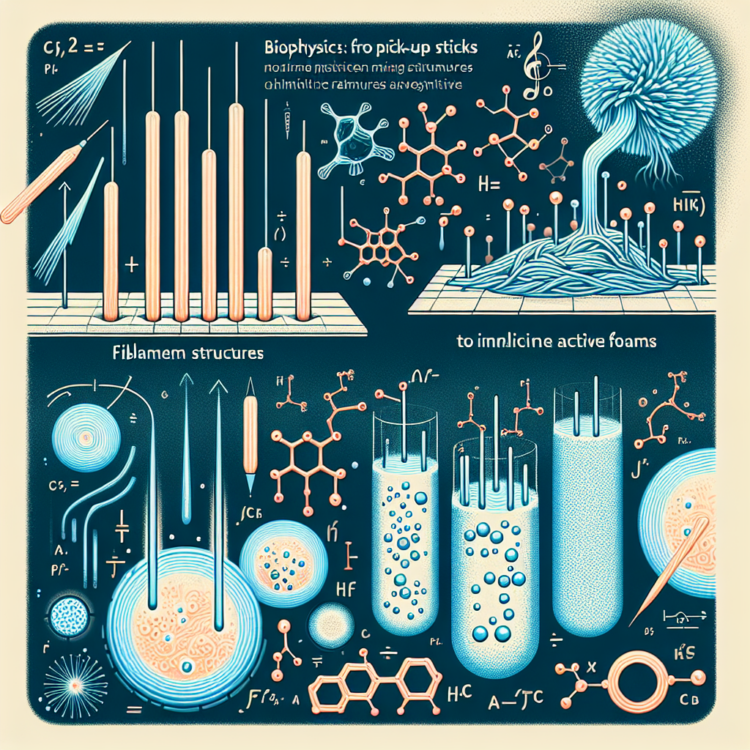LMU physicists have developed a new model that describes how filaments assemble into active foams.
LMU physicists have developed a new model that describes how filaments assemble into active foams.
Many fundamental processes of life, and their synthetic counterparts in nanotechnology, are based on the autonomous assembly of individual particles into complex patterns. LMU physicist Professor Erwin Frey investigates the fundamental principles of this self-organization. With his team, he has now developed a theoretical model which explains the formation of patterns such as active foams from a mixture of protein filaments and molecular motors. The researchers have reported on their findings in the journal Physical Review X.
Protein filaments, like microtubules, and molecular motors are fundamental components of the cytoskeleton in many types of cells. An important example of the construction and rebuilding of cellular structures through the interplay of filaments and motors is the mitotic spindle, which is responsible for correct cell division. Research conducted by a team at the University of California, Santa Barbara, using a simplified model system, has shown that diverse structures can emerge from the dynamic interplay between microtubules and molecular motors. These include aster-like micelles and a novel phase termed active foam. The basic building blocks of this foam are microtubule bilayers in which the filaments point in opposite directions. These bilayers then combine to form a network that undergoes sustained rearrangements.
“The active foam occurs when the number of microtubules is increased,” says Filippo De Luca, lead author of the study. “Our motivation was to understand the physical mechanism behind it.” With his team, the theoretical physicist Frey developed a mathematical model that can explain the pattern formation: “Using numerical simulations, we managed to reproduce the patterns observed in experiments as well as the transition from micelles to active foam controlled by the microtubule density,” explains Frey.
Ordered foam
The interaction between motors and microtubules is decisive for pattern formation. Without these motors, microtubules would be akin to a disorganized pile of pick-up sticks, lacking the organized structure necessary for complex cellular patterns. The motors connect microtubules in pairs and move along the filaments, aligning them in a parallel fashion. “They join them together sort of like a zip fastener as they proceed along the filaments,” says Frey. In the process, the two filaments can be slid past each other and repeatedly rearranged – an important quality for the formation of the foams.
The transition from micelles to foams depends on the number of motors and microtubules. When the number of components is low, the particles have a lot of freedom of movement, allowing individual micelles to form. “But if the number of components increases, band-like layers emerge and then even more complex structures like foams,” explains Frey. “These foams have an ordered structure with a mixture of pentagons, hexagons, and heptagons and resemble honeycombs.” Unlike honeycombs, however, active foams rearrange themselves repeatedly.
The theoretical model applies generally to all types of filaments and motors and opens up a new perspective on active matter. According to the authors, it could also help advance bionanotechnological applications in the future.
Journal
Physical Review X
Article Title
Supramolecular Assemblies in Active Motor-Filament Systems: Micelles, Bilayers, and Foams
Article Publication Date
19-Aug-2024




